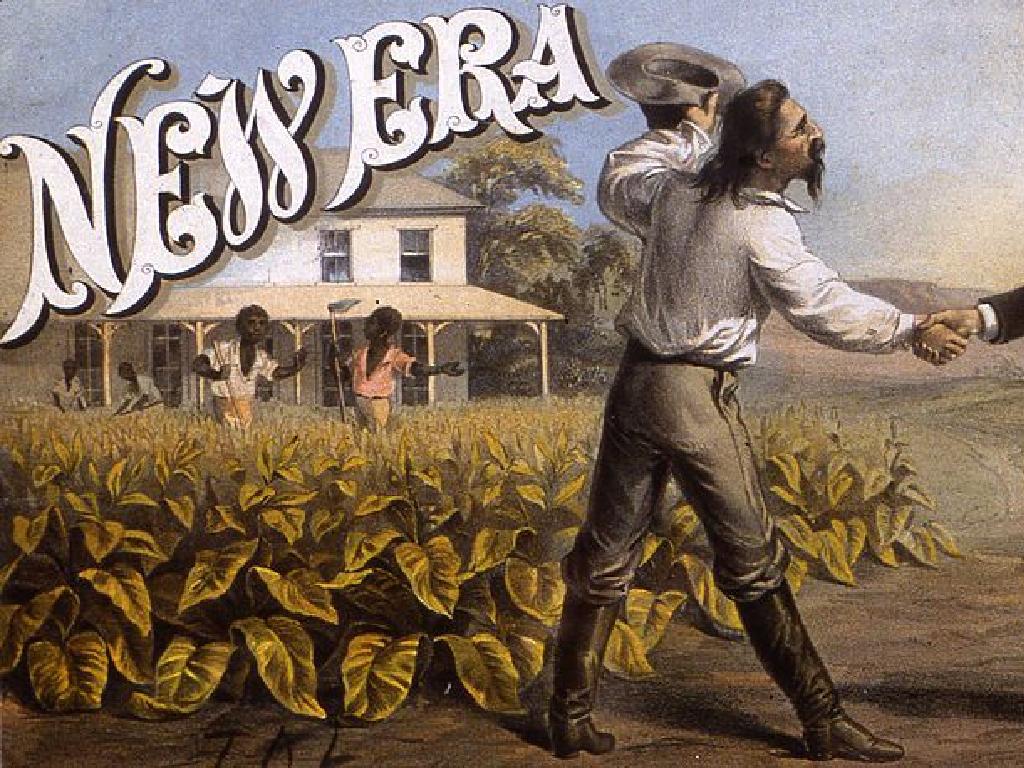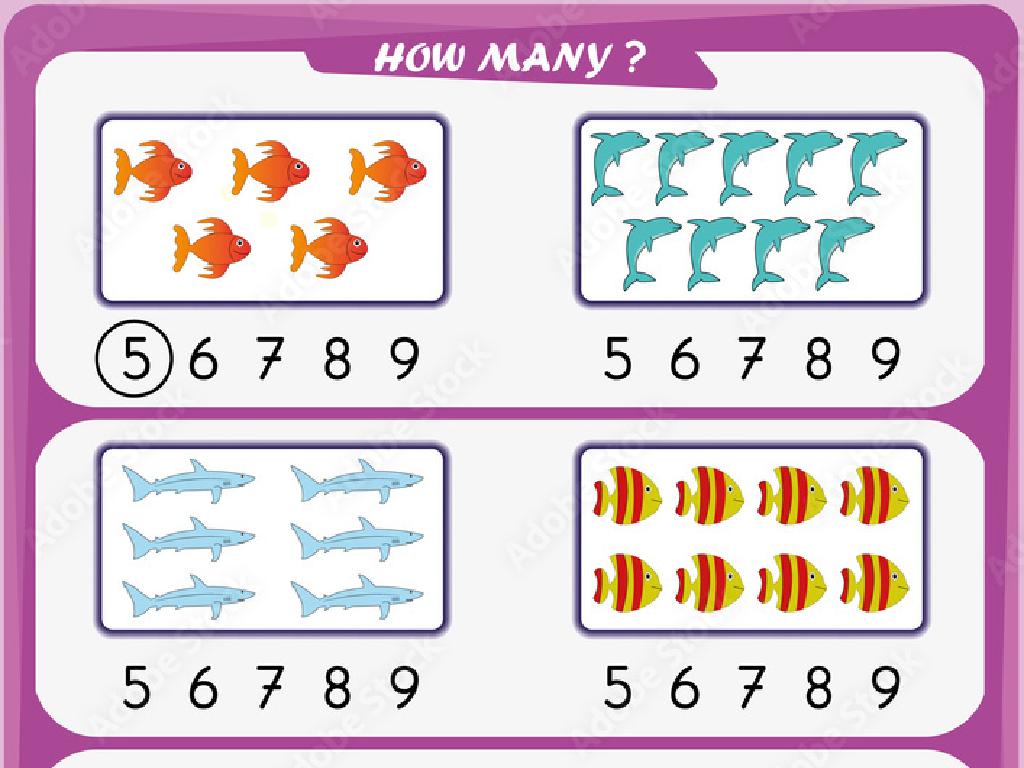Identify Shortage And Surplus With Data
Subject: Social studies
Grade: Fifth grade
Topic: Supply And Demand
Please LOG IN to download the presentation. Access is available to registered users only.
View More Content
Basics of Supply and Demand
– What is Supply and Demand?
– The amount of goods available vs. the desire for them.
– Impact on Daily Shopping
– Prices can change based on how much people want an item and how many are available.
– Real-life Supply & Demand
– Popular toys may become expensive if they are in high demand but hard to find.
– Identifying Shortage & Surplus
– Shortage: Not enough of an item. Surplus: More items than needed.
|
This slide introduces the fundamental economic concepts of supply and demand, which dictate the availability and price of goods. Explain that ‘supply’ refers to how much of a product is available, while ‘demand’ indicates how much people want that product. Discuss how these factors influence the cost of items we buy every day, such as groceries or clothes. Use relatable examples, like a popular toy during the holiday season, to illustrate how high demand and low supply can drive up prices, leading to a shortage. Conversely, if a store orders too many of a product that’s not popular, they end up with a surplus. Encourage students to think of examples and discuss how they have seen supply and demand in action in their own lives.
Understanding Economic Shortage
– Shortage in economics defined
– When demand exceeds supply, leading to a shortage
– Reasons behind product shortages
– Natural disasters, high demand, or production issues can cause shortages
– How shortages affect prices
– Shortages often lead to higher prices as people compete to buy
– Impact on consumers
– Consumers may face difficulty finding products or pay more during shortages
|
This slide aims to explain the concept of a shortage in economic terms, suitable for a fifth-grade audience. Begin by defining a shortage as a situation where the demand for a product is greater than the supply available. Discuss various causes such as unexpected high demand, production problems, or natural disasters that can disrupt supply chains. Highlight how shortages can lead to increased prices as consumers compete to purchase limited goods. Finally, discuss the impact on consumers, who may struggle to find the products they need or have to pay higher prices. Use relatable examples like a popular toy running out before the holidays or a grocery store running low on supplies before a storm.
Understanding Surplus in Economics
– Define economic surplus
– Surplus: when supply exceeds demand
– Causes of surplus
– Surplus happens if goods aren’t sold
– Surplus effects on prices
– Prices may drop if surplus persists
– Recognizing surplus in markets
|
This slide aims to explain the concept of surplus in the context of economics to fifth-grade students. Begin with the definition of surplus, emphasizing that it occurs when there is more of a product available than what people want to buy. Discuss common reasons why surplus might happen, such as overproduction or a decrease in demand. Explain how a surplus can lead to lower prices as sellers try to sell their excess goods. Use relatable examples, such as a lemonade stand where too much lemonade is made and not enough is sold, leading to a price drop. Encourage students to think of other examples and discuss how recognizing surplus can help businesses and consumers make better economic decisions.
Analyzing Data: Shortage & Surplus
– Read supply & demand graphs
– Graphs show how much people want a product and how much is available
– Find shortage & surplus points
– Shortage: high demand, low supply. Surplus: low demand, high supply
– Case study: Holiday toy industry
– How toy demand & supply change during Christmas
– Understanding market balance
|
This slide aims to teach students how to analyze supply and demand graphs to identify points of shortage and surplus. Begin by explaining the basics of reading graphs, focusing on the axes representing supply, demand, and price. Show how to spot when demand exceeds supply, indicating a shortage, and when supply exceeds demand, indicating a surplus. Use the example of the toy industry during the holiday season to illustrate these concepts, as toys are typically in high demand during this time, which can lead to shortages. Conversely, discuss what happens post-holidays when demand drops, potentially leading to a surplus of toys. Encourage students to think about how prices can change in response to shortage and surplus.
Shortage and Surplus in Our Community
– Discuss recent shortage/surplus examples
– Think about times when items were hard to find or in excess
– Group activity: Find shortage or surplus
– Work together to recall a situation of too few or too many items
– Share findings with the class
– Each group will explain their example to the class
– Understand reasons behind them
– Let’s figure out why these situations happened
|
This slide is designed to engage students in a practical understanding of shortage and surplus within their own community. Start by discussing recent real-world examples, such as a shortage of hand sanitizer or a surplus of holiday decorations after the season. For the group activity, students will identify and discuss a shortage or surplus situation they have experienced, encouraging them to connect personal experiences with economic concepts. After sharing their findings, guide the class to explore the reasons behind these situations, such as seasonal changes, trends, or unexpected events. This will help them grasp the impact of supply and demand on everyday life. Provide detailed guidelines for the teacher to facilitate the group activity, including how to form groups, time management, and prompting questions to help students think critically about the reasons for shortage and surplus.
Class Activity: The Lemonade Stand Game
– Introduction to Lemonade Stand game
– Learn shortage & surplus via management
– A shortage means not enough lemons, a surplus means too many!
– Apply knowledge to game decisions
– Decide on price and quantity based on weather and demand
– Reflect on your strategy and outcomes
– Think about what worked and what didn’t after the game
|
This interactive class activity uses a simulation game to teach students about the concepts of shortage and surplus in a fun and engaging way. The Lemonade Stand game will allow students to manage their own virtual lemonade stand, making decisions on pricing and inventory based on simulated market conditions. Encourage students to apply what they’ve learned about supply and demand to make informed decisions during the game. After the activity, lead a discussion where students can reflect on their strategies and the outcomes of their decisions. This will help them understand the real-world implications of shortage and surplus. Possible variations of the activity could include different weather scenarios, unexpected events, or varying customer preferences.






